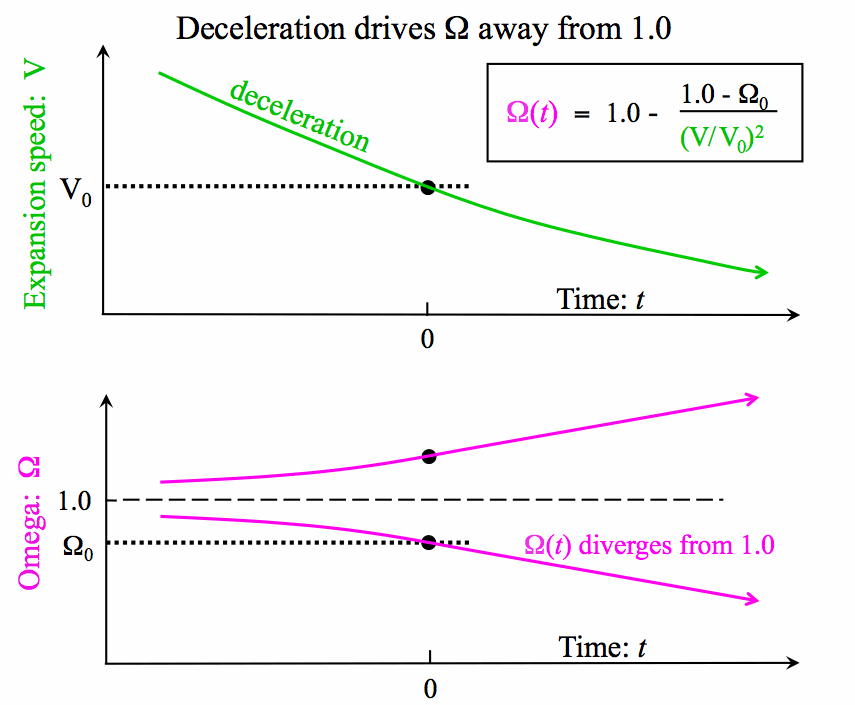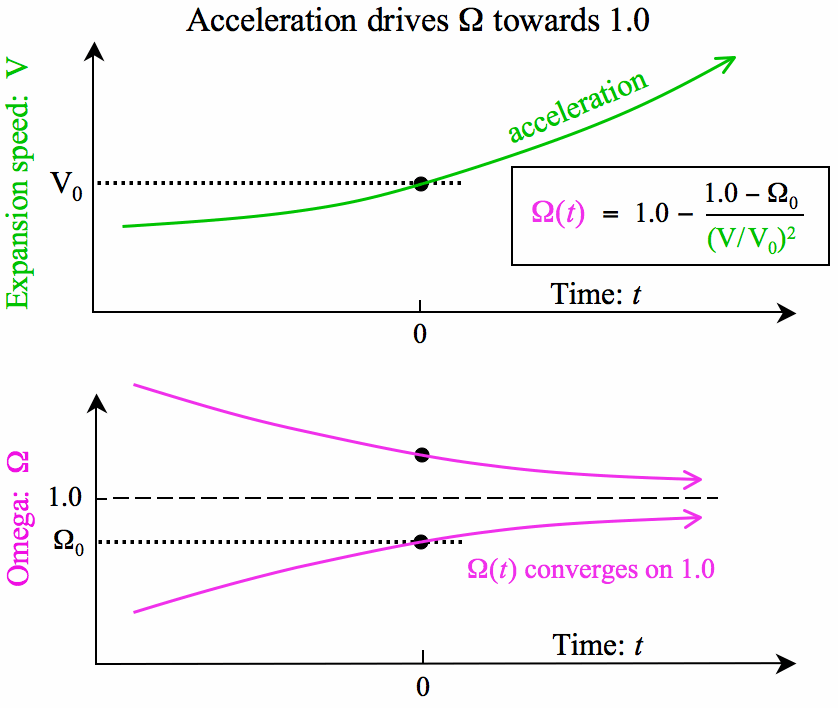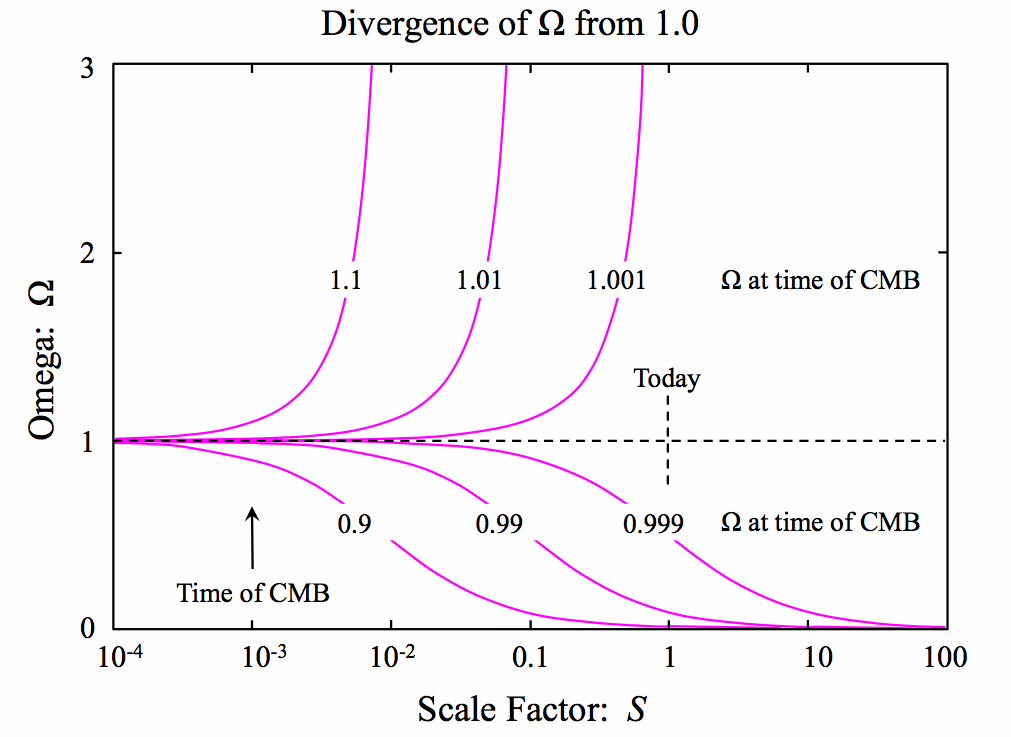

Since the evolution of  can be written:
can be written:  (t) = 1.0 - (1.0 -
(t) = 1.0 - (1.0 -  o)/(v/vo)2), then it is clear that a decelerating expansion drives
o)/(v/vo)2), then it is clear that a decelerating expansion drives  towards 1.00 (left) while accelerating expansion drives
towards 1.00 (left) while accelerating expansion drives  away from 1.00 (right).
away from 1.00 (right).

For a pure matter model (deceleration, with v/v0  a-1/3) we see the evolution of
a-1/3) we see the evolution of  (a) for six models with values of
(a) for six models with values of  (CMB) of 10%, 1% and 0.1% above and below 1.00. For those above 1.00, the divergence of
(CMB) of 10%, 1% and 0.1% above and below 1.00. For those above 1.00, the divergence of  corresponds to turnaround, followed by collapse, while for those below 1.00 the approach to zero signifies constant, coasting, expansion.
corresponds to turnaround, followed by collapse, while for those below 1.00 the approach to zero signifies constant, coasting, expansion.
Notice that for  o (today) within the range 0.95 - 1.05, then at the time of the CMB we need
o (today) within the range 0.95 - 1.05, then at the time of the CMB we need  to be within 0.9999 and 1.0001 (curve would be the next one in the series).
to be within 0.9999 and 1.0001 (curve would be the next one in the series).
Figure from Whittle's Teaching Company Course, and upcoming undergraduate text.